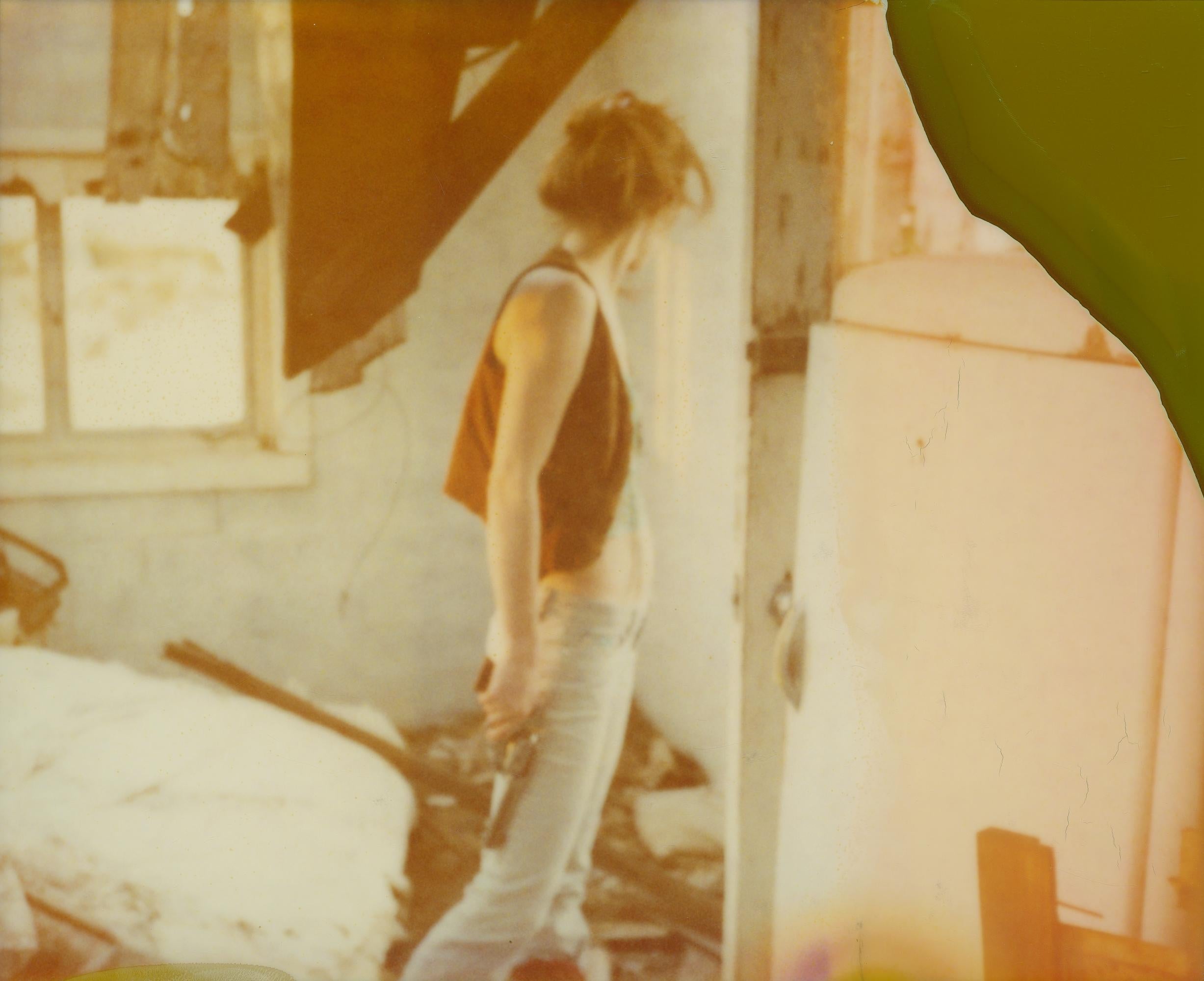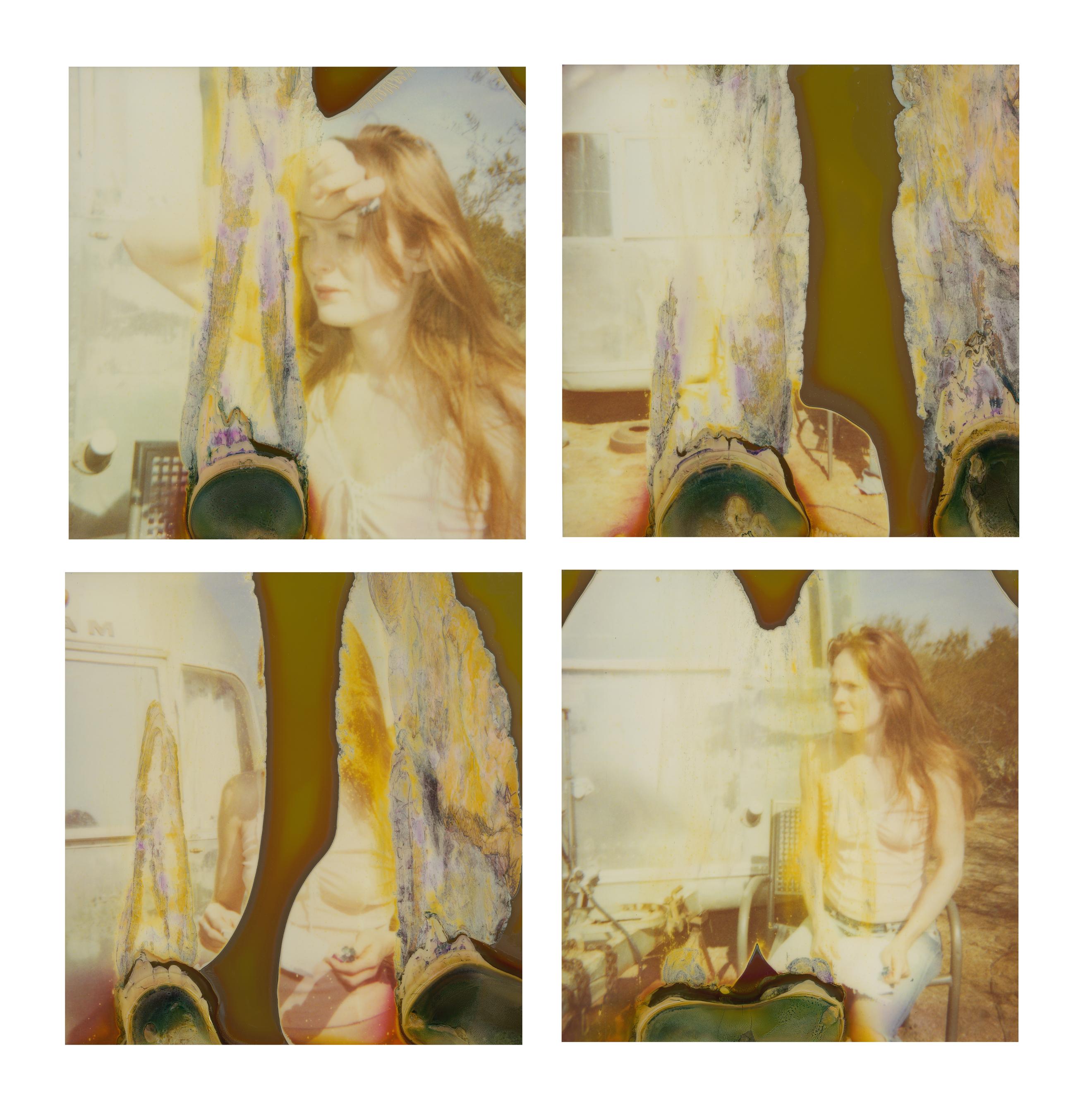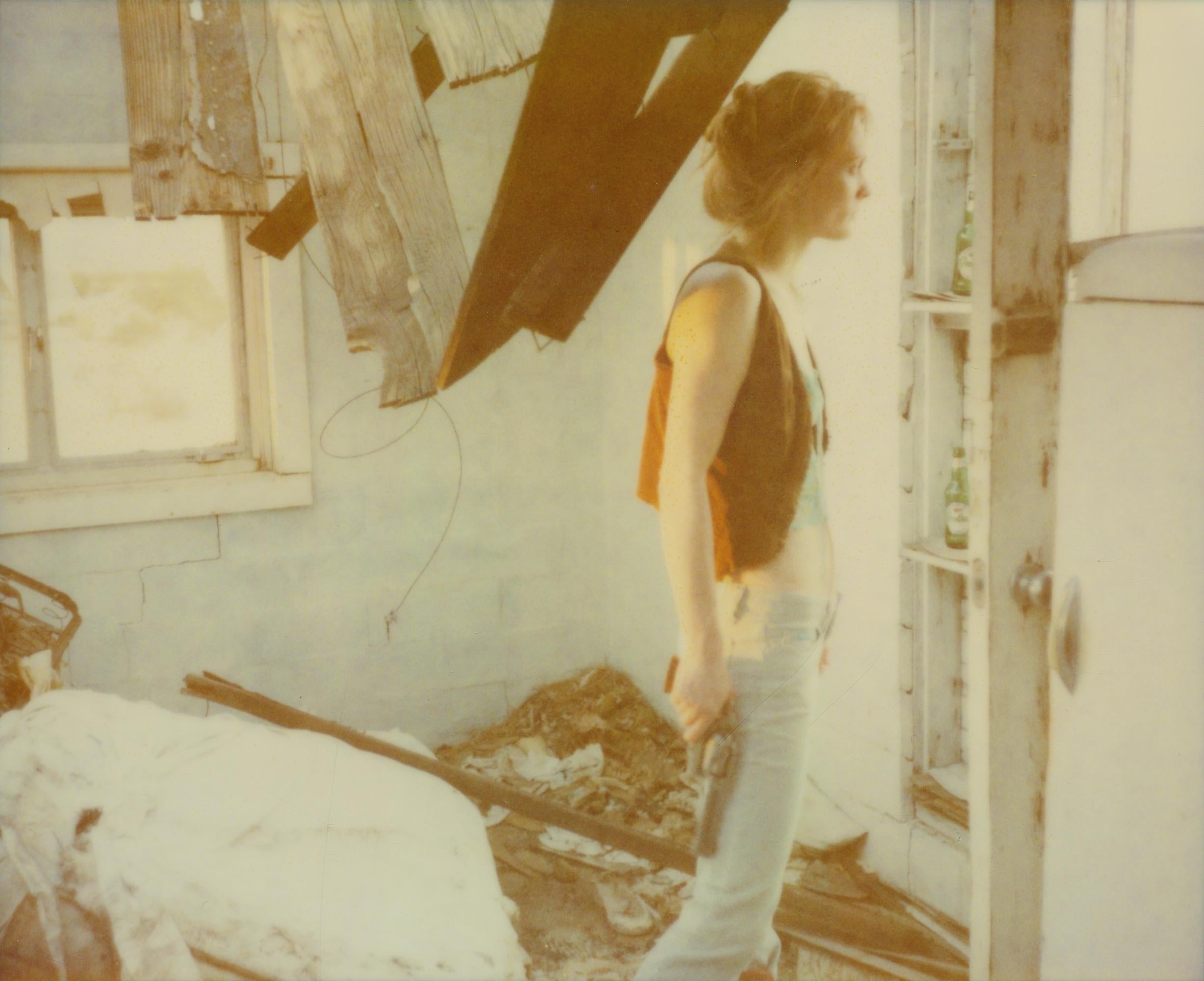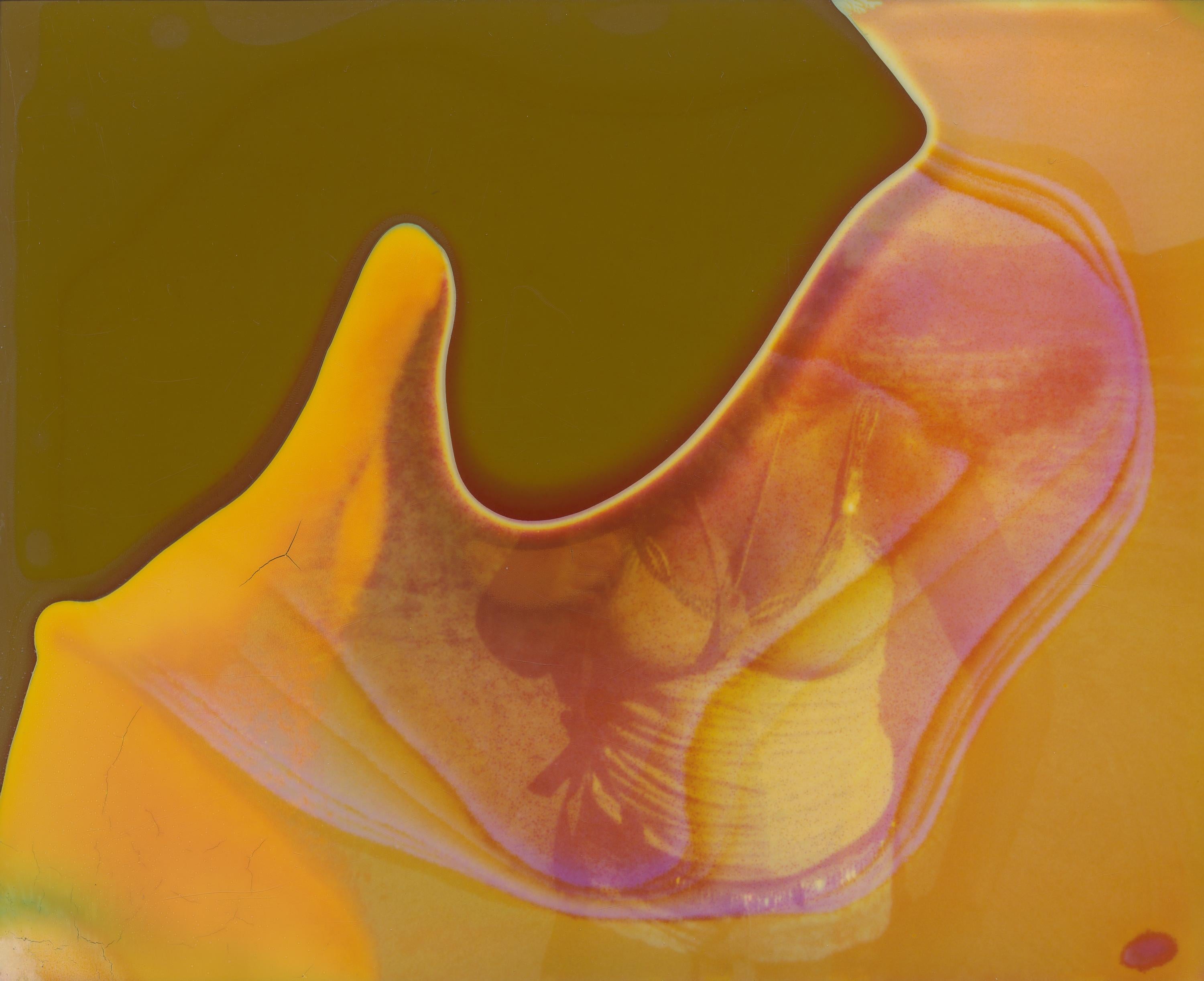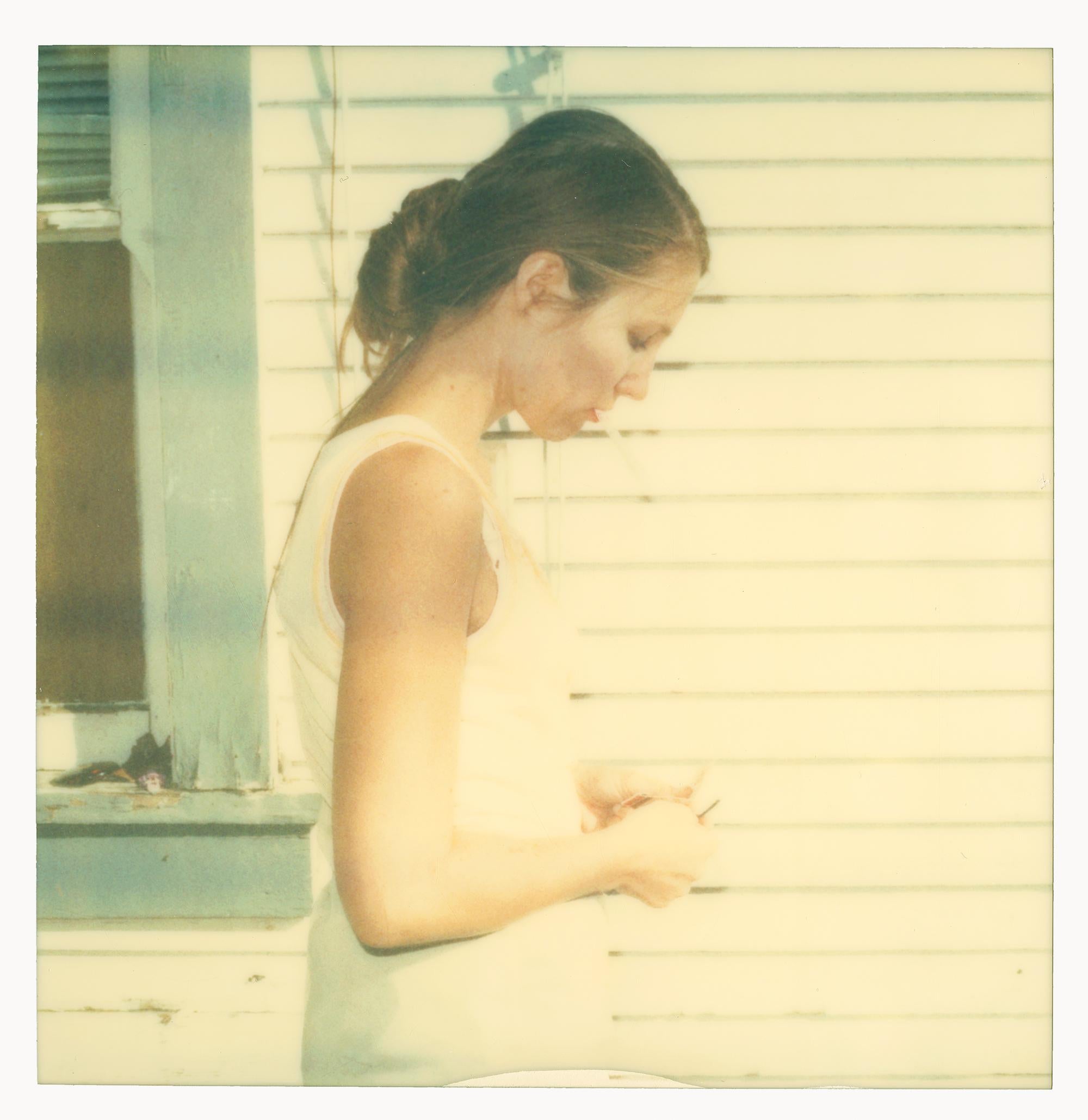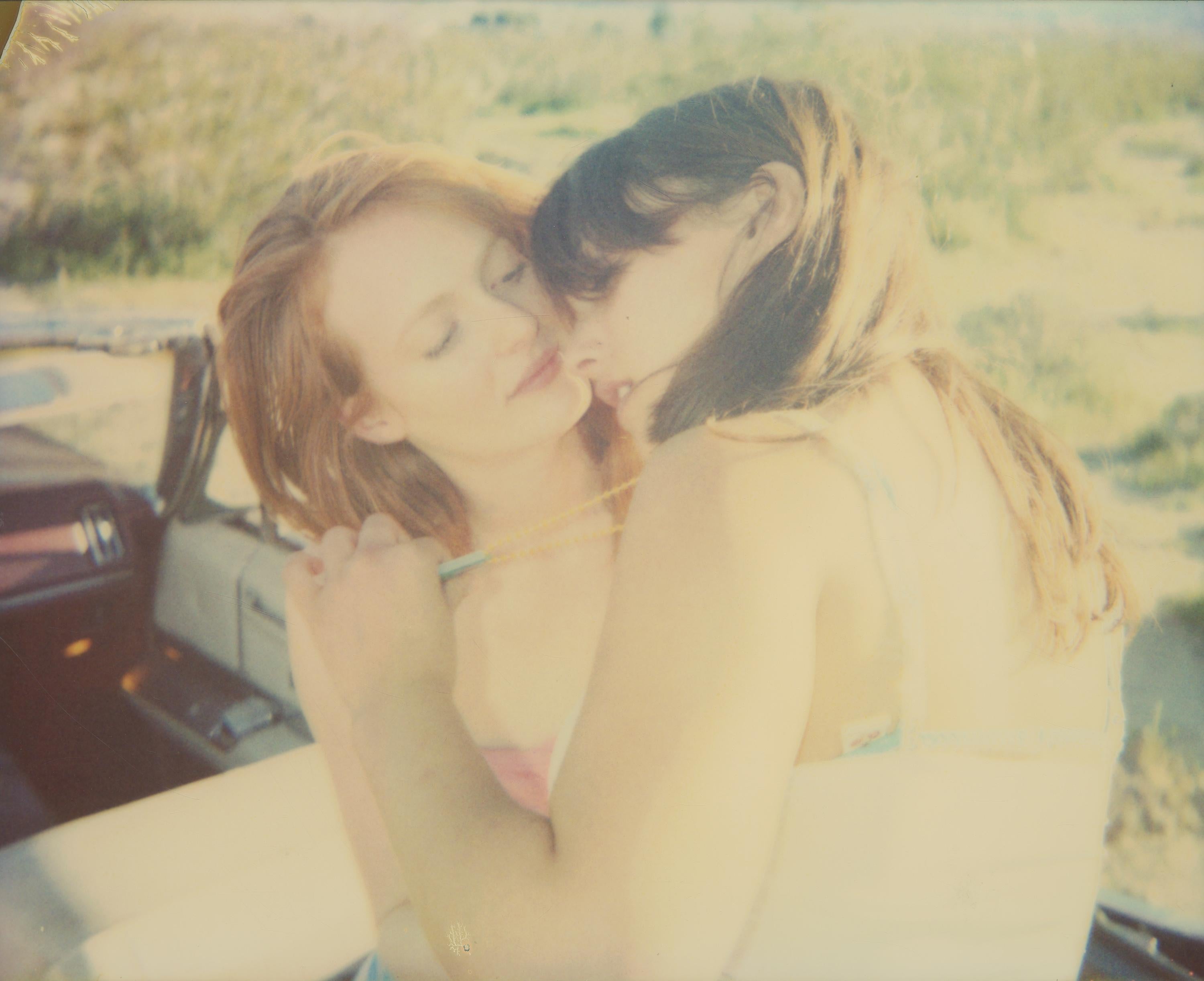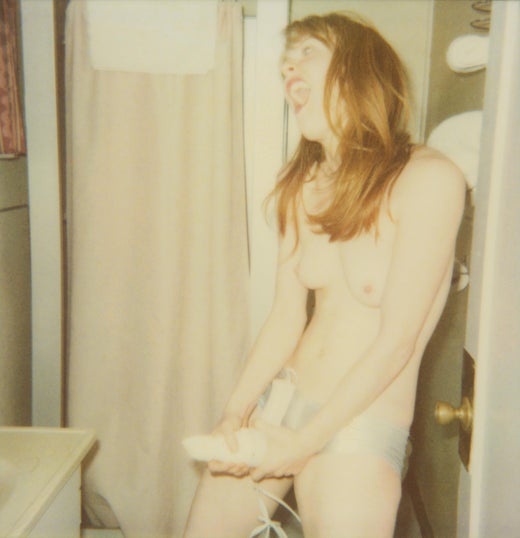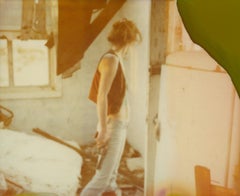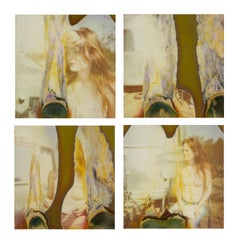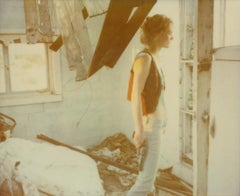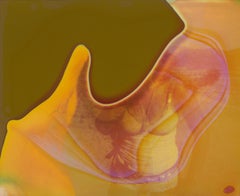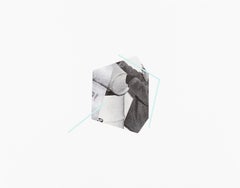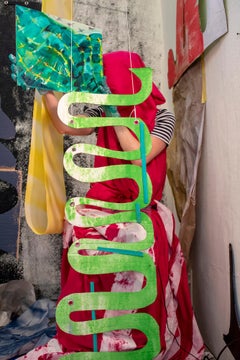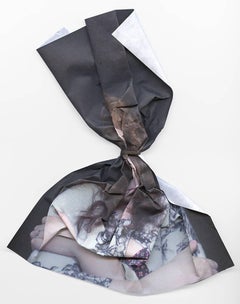Items Similar to Alphabet Soup (Till Death do us Part) - mounted
Want more images or videos?
Request additional images or videos from the seller
1 of 18
Stefanie SchneiderAlphabet Soup (Till Death do us Part) - mounted2005
2005
$7,000
£5,356.31
€6,130.35
CA$9,885.84
A$10,744.21
CHF 5,757.92
MX$130,453.85
NOK 72,287.16
SEK 67,035.35
DKK 45,786.14
About the Item
Alphabet Soup (Till Death do us Part) - 2005,
128x127cm,
Edition 2/5,
analog C-Print, hand-printed by the artist. based on the Polaroid.
Artist Inventory No. 9283.02.
Mounted on Aluminum with matte UV-Protection.
Signed on verso.
Slight damage. You can see two small scratches on the surface. The measurement on the ruler is cm. Ships in a crate.
Exhibition:
2017 Magie des Moments, Kunstverein Bad Homburg Artlantis, Bad Homburg (G)
2016 Instantdreams, Instantdreams Gallery, Berlin (S)
2012 Stefanie Schneider, c.art-Galerie, Bregenz, Austria (S)
2011 Hitchhiker, Festival Saint Germain des Près, Galerie Catherine et André Hug, Paris, France (S)
2009 29 Palms, CA, Galerie Koestlin, Artbar 71, Berlin, Germany (S)
2009 29 Palms, CA, Moravian Gallery, (Museum of Applied Arts), Brno,
Czech Republic (S)
THE GREATER THE EMPTINESS THE GRANDER THE ART – Stefan Gronert
Not “Twenty-six Gasoline Stations” but “29 Palms, CA”! Forty-two years after Ed Ruscha’s legendary book, there is no gasoline station at the beginning of the book that is here at hand. Instead it is the open-hearted Radha – with orange hair, pink-colored overalls and a bashful, or rather cunning, gaze that is directed downward – with which this book begins! And with her and with Max – attention: a woman –, one whose appearance is in accordance with the same styling, it comes to an end as well – after Radha has in the meantime colored her fingernails pink, again endowed with the same open heartedness and the same look which now, however, reveals in combination with her altered facial expression an “old-maidish” turning away from the viewer. This may serve as an example for a vivid and understandable transformation which flows into a large-scale representation of a cheerless settlement beneath a shining, blue sky – there a figure, lost straightaway, becomes overwhelmed.
Pictures which in 1998/99 play in the harsh California sunlight or in spaces that are not exactly cozy and comfortable. “Play” is the correct word in this regard, for precisely in view of the pictures of persons, there remains more than just doubt as to whether we are looking at staged scenes or have simply happened upon the high-strung “reality” of a (wannabe) film world. Yet not all the pictures have the same character of a glaring, plastic world. Upon flipping through the pages, we also encounter unpretentious, literally “colorless” scenes in undefined interiors, or unspectacular views resembling a still life and opening out onto a nowhere land. That which connects all participants in these picture-worlds is the observation that they appear to be exhausted, lost, empty or uncertain about their existence. One is almost reminded of the empty gazes and loneliness of the protagonists in the pictures of large cities painted by Manet or Degas in the era of Early Modernism.
With one exception, all the photographs which are reproduced here, which originally measure 60 by 70 cm but which here, in their present size and configuration, make productive use of the possibilities presented by the medium of the book, manifest several elements of B-movies: smoking, naked, made-up and muscular persons who are not inclined to conform entirely to the vision of Hollywood dreams. Beauty and vexation, eroticism and loneliness enter into a mixture which reveals the rift between desire and truth. From a distance, one is reminded of the “Untitled Film Stills” of Cindy Sherman, which in this regard are not nearly as drastic. Yet whereas her photos from the seventies are characterized by a cool, objective mode of representation in historicizing blackand-white, the photographs of Stefanie Schneider evince a soft, sometimes seemingly pictorial visual language with a coloration ranging from the pale to the artificial-glaring. As in many other pictures of Stefanie Schneider which often present themselves to us as sequences, these photos refer back as well to the perceptual stereotypes of film. Making use of instant photography, proceeding from which significantly enlarged C-prints come into being, her pictures summon up the impression of a narration without ultimately becoming part of a plot that is readable in a linear fashion. The illusion of the narrative element, however, simply enhances the experience of a renunciation of just this aspect. For the picture titles as well – and also the title of this publication – provide no real help with the imaginary construction of a story.
Nevertheless, names return which include the first name of the artist herself: hence is everything not in fact a game but rather a series of authentic and instantaneous images, or is it after all nothing other than a staging, a game – how real is life? The paucity of plot elements, which contradicts all expectation of a cinematic style, as well as the emptiness and loneliness of the persons, enters into a peculiar, sometimes seemingly surreal association with the magic of the sun-drenched expanses of the dreamlike landscape. Just as the fantasy and imagination of the viewer are stimulated, so to the same great extent does the redemption of these visual figures of love founder on a void whose glaze is created, not least of all, by the peculiar blurriness of the photographic representation. The seemingly amateur character of these pictures, which have in no way been treated with any excessive scrupulousness, leaves us with a stimulating incertitude as to their interpretation, one in which the spheres of reality, fiction or dream are scarcely capable any longer of being differentiated. Thus the gaps and the scenic openness of what is presented ultimately set in motion a self-appraisal.
So what remains after “29 Palms, CA”? Perhaps that hope which deviates from the saying of Ruscha that is quoted in the title: The stronger the photography the better the reality will be!
- Creator:Stefanie Schneider (1968, German)
- Creation Year:2005
- Dimensions:Height: 50.4 in (128 cm)Width: 50.01 in (127 cm)Depth: 0.12 in (3 mm)
- Medium:
- Movement & Style:
- Period:
- Condition:ships in a crate.
- Gallery Location:Morongo Valley, CA
- Reference Number:1stDibs: LU652312695732
Stefanie Schneider
Stefanie Schneider received her MFA in Communication Design at the Folkwang Schule Essen, Germany. Her work has been shown at the Museum for Photography, Braunschweig, Museum für Kommunikation, Berlin, the Institut für Neue Medien, Frankfurt, the Nassauischer Kunstverein, Wiesbaden, Kunstverein Bielefeld, Museum für Moderne Kunst Passau, Les Rencontres d'Arles, Foto -Triennale Esslingen., Bombay Beach Biennale 2018, 2019.
About the Seller
4.9
Platinum Seller
Premium sellers with a 4.7+ rating and 24-hour response times
Established in 1996
1stDibs seller since 2017
1,050 sales on 1stDibs
Typical response time: 1 hour
- ShippingRetrieving quote...Shipping from: morongo valley, CA
- Return Policy
More From This Seller
View AllDreamlife of Angels (Till Death do us Part)
By Stefanie Schneider
Located in Morongo Valley, CA
Dreamlife of Angels (Till Death Do Us Part) - 2007
20x24cm,
Edition of 10, plus 2 Artist Proofs.
Archival C-Print, based on the Polaroid,
Certificate and Signature label
Artist I...
Category
Early 2000s Contemporary Portrait Photography
Materials
Archival Paper, Photographic Paper, C Print, Color, Polaroid
The Letter (Till Death do us Part) - Contemporary, Polaroid, Women
By Stefanie Schneider
Located in Morongo Valley, CA
The Letter (Till Death Do Us Part) - 2005
100x100cm including white frame,
Edition of 10, plus 2 Artist Proofs.
Archival C-Print, based on the original Polaroids.
Certificate and...
Category
Early 2000s Contemporary Color Photography
Materials
Archival Paper, Photographic Paper, C Print, Color, Polaroid
Dreamlife of Angels (Till Death do us Part)
By Stefanie Schneider
Located in Morongo Valley, CA
Dreamlife of Angels (Till Death Do Us Part) - 2007
40x50cm,
Edition of 10 plus 2 Artist Proofs.
Archival C-Print, based on the Polaroid.
Certificate and Signature label.
artist ...
Category
Early 2000s Contemporary Portrait Photography
Materials
Archival Paper, Photographic Paper, C Print, Color, Polaroid
Living in a Dream (Till Death do us Part) - Contemporary, Polaroid, Women
By Stefanie Schneider
Located in Morongo Valley, CA
Living in a Dream (Till Death do us Part) - 2005
20x20cm,
Edition of 10,
Archival C-Print print, based on the Polaroid.
Certificate and Signature label, artist Inventory No. 9781.
Not mounted.
on offer is a piece from the movie "Till Death do us Part"
Stefanie Schneider’s Till Death Do Us Part
or “There is Only the Desert for You.”
BY DREW HAMMOND
Stefanie Schneider’s Til Death to Us Part is a love narrative that comprises three elements:
1.
A montage of still images shot and elaborated by means of her signature technique of using Polaroid formats with outdated and degraded film stock in natural light, with the resulting im ages rephotographed (by other means) enlarged and printed in such a way as to generate further distortions of the image.
2.
Dated Super 8 film footage without a sound track and developed by the artist.
3.
Recorded off-screen narration of texts written by the actors or photographic subjects, and selected by the artist.
At the outset, this method presupposes a tension between still and moving image; between the conventions about the juxtaposition of such images in a moving image presentation; and, and a further tension between the work’s juxtaposition of sound and image, and the conventional relationship between sound and image that occurs in the majority of films. But Till Death Do Us Part also conduces to an implied synthesis of still and moving image by the manner in which the artist edits or cuts the work.
First, she imposes a rigorous criterion of selection, whether to render a section as a still or moving image. The predominance of still images is neither an arbitrary residue of her background as a still photographer—in fact she has years of background in film projects; nor is it a capricious reaction against moving picture convention that demands more moving images than stills. Instead, the number of still images has a direct thematic relation to the fabric of the love story in the following sense. Stills, by definition, have a very different relationship to time than do moving images. The unedited moving shot occurs in real time, and the edited moving shot, despite its artificial rendering of time, all too 2009often affords the viewer an even greater illusion of experiencing reality as it unfolds. It is self-evident that moving images overtly mimic the temporal dynamic of reality.
Frozen in time—at least overtly—still photographic images pose a radical tension with real time. This tension is all the more heightened by their “real” content, by the recording aspect of their constitution. But precisely because they seem to suspend time, they more naturally evoke a sense of the past and of its inherent nostalgia. In this way, they are often more readily evocative of other states of experience of the real, if we properly include in the real our own experience of the past through memory, and its inherent emotions.
This attribute of stills is the real criterion of their selection in Til Death Do Us Part where consistently, the artist associates them with desire, dream, memory, passion, and the ensemble of mental states that accompany a love relationship in its nascent, mature, and declining aspects.
A SYNTHESIS OF MOVING AND STILL IMAGES BOTH FORMAL AND CONCEPTUAL
It is noteworthy that, after a transition from a still image to a moving image, as soon as the viewer expects the movement to continue, there is a “logical” cut that we expect to result in another moving image, not only because of its mise en scène, but also because of its implicit respect of traditional rules of film editing, its planarity, its sight line, its treatment of 3D space—all these lead us to expect that the successive shot, as it is revealed, is bound to be another moving image. But contrary to our expectation, and in delayed reaction, we are startled to find that it is another still image.
One effect of this technique is to reinforce the tension between still and moving image by means of surprise. But in another sense, the technique reminds us that, in film, the moving image is also a succession of stills that only generate an illusion of movement. Although it is a fact that here the artist employs Super 8 footage, in principle, even were the moving images shot with video, the fact would remain since video images are all reducible to a series of discrete still images no matter how “seamless” the transitions between them.
Yet a third effect of the technique has to do with its temporal implication. Often art aspires to conflate or otherwise distort time. Here, instead, the juxtaposition poses a tension between two times: the “real time” of the moving image that is by definition associated with reality in its temporal aspect; and the “frozen time” of the still image associated with an altered sense of time in memory and fantasy of the object of desire—not to mention the unreal time of the sense of the monopolization of the gaze conventionally attributed to the photographic medium, but which here is associated as much with the yearning narrator as it is with the viewer.
In this way, the work establishes and juxtaposes two times for two levels of consciousness, both for the narrator of the story and, implicitly, for the viewer:
A) the immediate experience of reality, and
B) the background of reflective effects of reality, such as dream, memory, fantasy, and their inherent compounding of past and present emotions.
In addition, the piece advances in the direction of a Gesammtkunstwerk, but in a way that reconsiders this synaesthesia as a unified complex of genres—not only because it uses new media that did not exist when the idea was first enunciated in Wagner’s time, but also because it comprises elements that are not entirely of one artist’s making, but which are subsumed by the work overall. The totality remains the vision of one artist.
In this sense, Till Death Do Us Part reveals a further tension between the central intelligence of the artist and the products of other individual participants. This tension is compounded to the degree that the characters’ attributes and narrated statements are part fiction and part reality, part themselves, and part their characters. But Stefanie Schneider is the one who assembles, organizes, and selects them all.
THE RELATIONSHIP BETWEEN THIS IDEA (above) AND PHOTOGRAPHY
This selective aspect of the work is an expansion of idea of the act of photography in which the artistic photographer selects that which is already there, and then, by distortion, definition or delimitation, compositional and lighting emphasis, and by a host of other techniques, subsumes that which is already there to transform it into an image of the artist’s contrivance, one that is no less of the artist’s making than a work in any other medium, but which is distinct from many traditional media (such as painting) in that it retains an evocation of the tension between what is already there and what is of the artist’s making. Should it fail to achieve this, it remains, to that degree, mere illustration to which aesthetic technique has been applied with greater or lesser skill.
The way Til Death Do Us Part expands this basic principle of the photographic act, is to apply it to further existing elements, and, similarly, to transform them. These additional existing elements include written or improvised pieces narrated by their authors in a way that shifts between their own identities and the identities of fictional characters. Such characters derive partially from their own identities by making use of real or imagined memories, dreams, fears of the future, genuine impressions, and emotional responses to unexpected or even banal events. There is also music, with voice and instrumental accompaniment. The music slips between integration with the narrative voices and disjunction, between consistency and tension. At times it would direct the mood, and at other times it would disrupt.
Despite that much of this material is made by others, it becomes, like the reality that is the raw material of an art photo, subsumed and transformed by the overall aesthetic act of the manner of its selection, distortion, organization, duration, and emotional effect.
* * *
David Lean was fond of saying that a love story is most effective in a squalid visual environment. In Til Death Do Us Part, the squalor of the American desert...
Category
Early 2000s Contemporary Color Photography
Materials
Archival Paper, Photographic Paper, C Print, Color, Polaroid
Untitled (The Last Picture Show)
By Stefanie Schneider
Located in Morongo Valley, CA
'Untitled' (The Last Picture Show) - 2005
38x37cm,
Edition of 10.
Archival C-Print, based on the Polaroid.
Certificate and signature label.
Artist inventory 1016.
Not mounted.
Category
Early 2000s Contemporary Figurative Photography
Materials
Archival Paper, Photographic Paper, C Print, Color, Polaroid
In Other Words (Till Death do us Part)
By Stefanie Schneider
Located in Morongo Valley, CA
In Other Words (Till Death do us Part) - 2005
20x24cm,
Edition of 10 plus 2 Artist Proofs.
Archival C-Print, based on a Polaroid.
Certificate and Signature label.
Artist Invent...
Category
Early 2000s Contemporary Color Photography
Materials
Archival Paper, Photographic Paper, C Print, Color, Polaroid
You May Also Like
Word World
By Jessica Houston
Located in Montreal, Quebec
Collage of photographs and Pantone color swatches on paper
Suspended in a Sunbeam, is a series of mixed-media works that span Jessica Houston’s decade-long engagement with the Canad...
Category
2010s Contemporary Figurative Photography
Materials
Mixed Media, Photographic Paper
"GHOST SHOWS A PAINTING", photograph, tableau, portrait, assemblage, costume
By Sophia Rauch
Located in Toronto, Ontario
"GHOST SHOWS A PAINTING", 2018, is a color photograph by Sophia Rauch, one in a series of "Ghost" pictures. It's an inkjet print on Hahnemeule Photo Rag P...
Category
21st Century and Contemporary Contemporary Portrait Photography
Materials
Archival Paper, Photographic Paper, Inkjet
Untitled #5
By Anna Minnick
Located in Kansas City, MO
Materials : Ink Jet Print
Date : 2015
Dimensions : 20″ x 16″
COA provided
Anna Minnick's work explores the struggles of identity and mental illness. She hopes her work forms a dialo...
Category
2010s Contemporary Portrait Photography
Materials
Photographic Paper, Inkjet
Price Upon Request
Maybe Yes, Maybe No
Located in Los Angeles, CA
The Art of Seduction, 2023.
Cyanotype Unique Variant Print
Limited Edition of 7
Cyanotype gives a contemporary edge to this flirty dialogue made from vintage magazines, and brings conversation to the counterculture of the "swinging sixties".
+ Cyanotype hand-printed on Arches BFK Rives French watercolor paper
+ Deckled Edges on all four sides
+ Signed and editioned on front in pencil
+ Letter of Authenticity
+ Printed in Los Angeles, CA
WHAT IS A CYANOTYPE?
cyan = blue
type = print
Cyanotype is a historic photographic processes, invented in 1842 and used by Anna Atkins–the first female photographer. The process involves coating watercolor paper with light-sensitive chemistry made of iron salts. Photographic negatives are laid on top, exposed in the sunlight, and then washed in water to develop into the deep Prussian-blue unique to cyanotypes. Brings a moment of beauty and conversation to any space.
ABOUT THE ARTIST:
Alexandra DeFurio...
Category
2010s Contemporary Figurative Photography
Materials
Film, Mixed Media, Watercolor, Magazine Paper, Color, Photogram
Untitled #18
By Laura Letinsky
Located in New York, NY
from the series "Ill Form and Void Full"
Ed. of 9
Price Upon Request
Untitled #20
By Laura Letinsky
Located in New York, NY
from the series "Ill Form and Void Full"
Category
21st Century and Contemporary Photography
Price Upon Request
